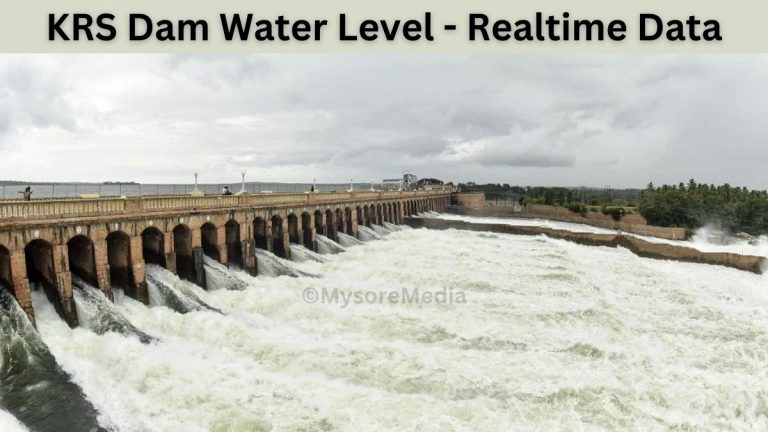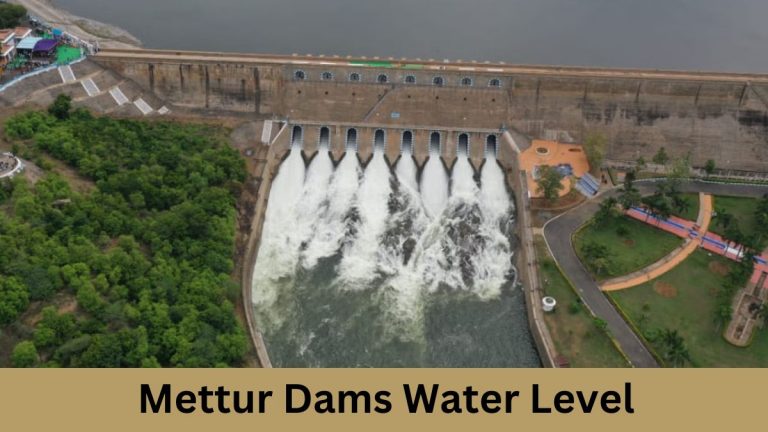Karnataka Dams Water Level Today As On 23 March 2025
Are you curious about the current water levels in Karnataka’s dams? You’re in the right place. We’re here to provide you with real-time data on the water levels in Karnataka’s major reservoirs, including KRS, Kabini, Harangi, Hemavathy, and more.
Whether you’re a local resident, a farmer, or simply interested in the state’s water resources, this information can be very useful. Let’s dive in and find out the current water levels in Karnataka’s dams.
Source: Karnataka State Water Resources Department
Note: This dashboard displays real-time data as published by the Karnataka Government Water Resources Department; To avoid fetching delay and for the most accurate information, Kindly refer to the Dams official website.
Latest News
According to the latest report by Deccan Herald, the Krishna Raja Sagar (KRS) reservoir in the Cauvery River basin remained at its full capacity of 124.80 ft for an unprecedented 172 days, from July 21, 2024, to January 12, 2025. This marks the longest period the dam has been full since the year 2000, surpassing the previous record of 146 days in 2009.
As of January 20, 2025, the water level at KRS has begun to drop, reaching 122.24 ft. Despite this, the dam still holds 45.952 TMC ft of water, which is 93% of its total capacity. Meanwhile, the overall storage in the Cauvery basin reservoirs stands at 78%, with a total of 89.02 TMC ft, against the maximum capacity of 114.57 TMC ft.
This extended period of full capacity is attributed to above-normal monsoon rainfall in Karnataka. The state received 15% excess southwest monsoon (June–September 2024) and 30% excess northeast monsoon (October–December 2024), significantly boosting water levels across the Cauvery basin.
Historically, KRS has seen varying durations of full capacity, with 114 days in 2022, 105 days in 2019, and 98 days in 2014. However, the absence of a downstream balancing reservoir means excess water flows into Tamil Nadu. By December 2024, 282.241 TMC ft of Cauvery water had reached Biligundlu, the interstate measuring point.
With the Cauvery Water Regulation Committee requiring Karnataka to release 177 TMC ft of water by May 2025, KRS remains a crucial water source, playing a vital role in managing the region’s water needs.
Karnataka’s Precious Water Reservoirs: An Overview
Karnataka is home to a network of dams and reservoirs, strategically designed to manage water resources and support various needs such as irrigation, drinking water supply, and electricity generation. These reservoirs are essential for the state’s economy and agriculture.
- Krishna Raja Sagar Dam (KRS): The Krishna Raja Sagar Dam, located in Mandya district, is not only one of the state’s most significant reservoirs but also a symbol of engineering marvel. Its capacity to hold water is a staggering 49.48 thousand million cubic feet (TMC). The dam’s strength is a testament to human ingenuity and has been a lifeline for the region. Know KRS Dam Water level.
- Kabini Dam: Nestled in the beautiful wilderness of Wayanad, Kerala, and Mysore, Karnataka, the Kabini Dam is known for its robust structure. With a capacity of 19.52 TMC, it stands as a prime example of sustainable water management, ensuring both the ecosystem and human needs are met.
- Harangi Dam: Situated on the Harangi River in Kodagu district, the Harangi Dam boasts a capacity of 8.5 TMC. Its strength has been vital in managing the water needs of the region, from agriculture to drinking water supply.
- Hemavathy Dam: Located in Hassan district, the Hemavathy Reservoir is another critical water storage facility with a capacity of 37.10 TMC. Its structural integrity and capacity have made it a cornerstone for agriculture and water supply.
Suggested Read: Mettur Dam Current Water Level
Why Monitoring Dam Water Levels is Essential
As of 25th January 2024, the water levels in major dams across Karnataka are looking much healthier this year. This is a significant improvement compared to last year, thanks to the good monsoon rains. Last year, many of these dams had lower water levels, which affected the agriculture sector severely. The ample rainfall this monsoon has ensured that these dams are filled to capacity, providing much-needed water for irrigation.
This boost in water levels is a big relief for farmers across the state, supporting the growth of crops like rice, sugarcane, and vegetables. It also helps in maintaining soil moisture and reducing the risk of drought, ensuring better yields and helping farmers secure a stable income. The good rainfall not only benefits agriculture but also helps recharge groundwater levels, promoting sustainable farming practices in the region.
In Conclusion:
Water is a precious resource, and keeping track of dam water levels is a responsibility we all share. Whether it’s for agriculture, drinking water, or electricity, having real-time data helps us make informed decisions. If you’re curious about today’s water levels in Karnataka’s dams, be sure to check the official sources for the latest information. Stay informed, stay prepared, and contribute to the sustainable management of Karnataka’s vital water resources.


